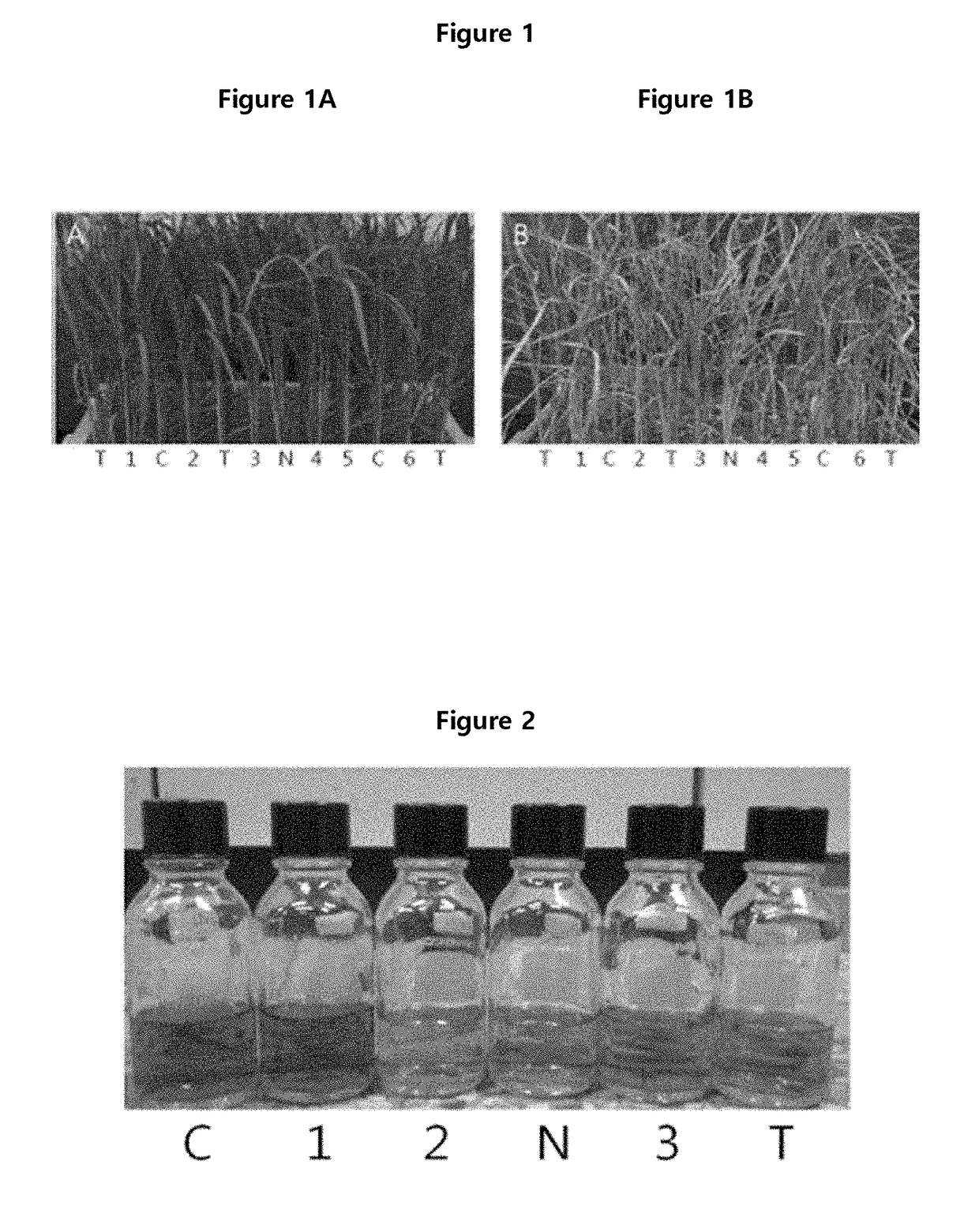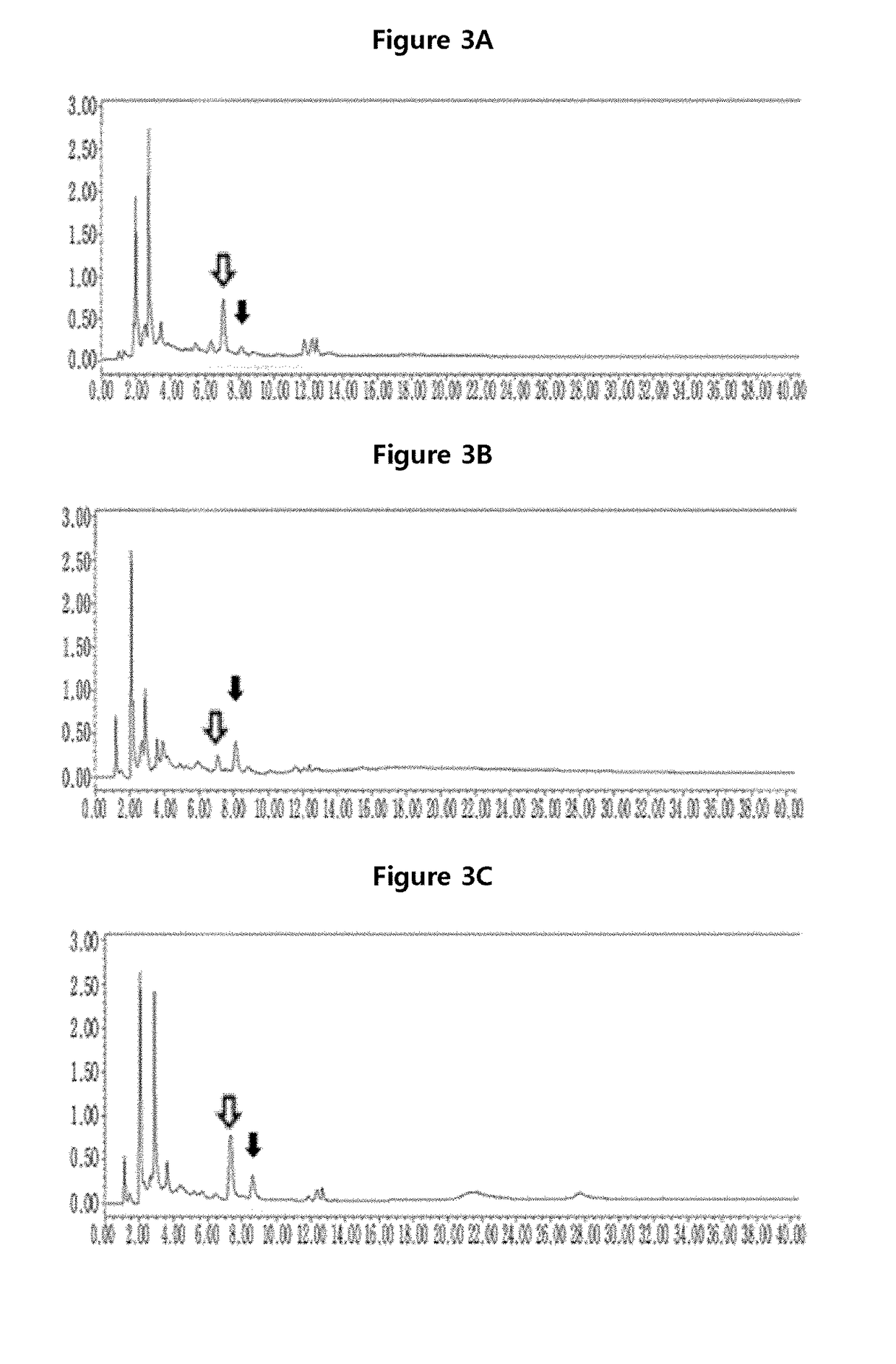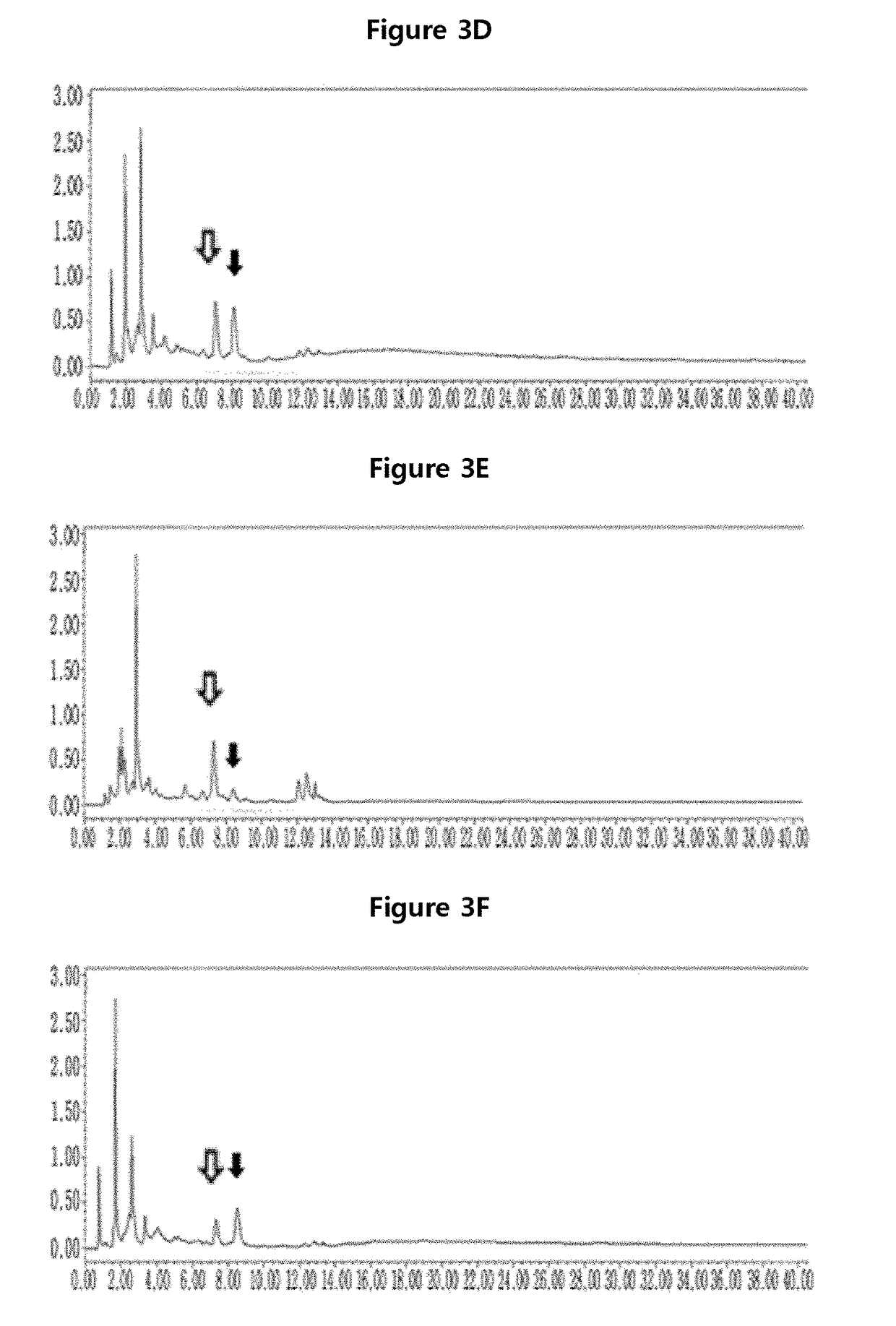Method for isolating flavonoids from rice plant inoculated with whitebacked planthopper
a technology of planthopper and flavonoids, which is applied in the field of isolating flavonoids from rice plant inoculated with whitebacked planthopper, can solve the problems of high cost, low production efficiency, and harmful insects to rice, and achieve the effect of increasing the content of cochlioquinone and enhancing the efficiency of isolating cochlioquinone or chrysoeriol
- Summary
- Abstract
- Description
- Claims
- Application Information
AI Technical Summary
Benefits of technology
Problems solved by technology
Method used
Image
Examples
example 1
erial and Biological Examination
[0044]Whitebacked planthopper (WBPH) was raised in an acryl growth box (50×50×40 cm). The growth chamber was maintained at the temperature of 27° C. with the humidity of 60˜70% and the sunshine condition was maintained for 16 hours a day at the light strength of 3,000 lux. 40˜50 pairs of WBPHs were raised and crossed in that box. Chucheongbyeo (20˜25 g) was given as feeds which was washed with running water after sterilization and then sprouted at 29˜30° C. for 7 days, followed by germination in a greenhouse. Young rice plants which had grown for 10 days were replaced every 3˜4 days as fresh feeds.
[0045]When the planthoppers were 2˜3 instar, they were inoculated to 120 Cheongcheong (indica) / Nagdong (japonica) haploid (CNDH), Cheongcheong, Nagdong, and TN1 seeds harvested at Kyungpook National University Farm in 2012 for 3 weeks. After the inoculation, 30˜35 seeds of each line were soaked in disinfectant for 24 hours, followed by washing with running w...
example 2
act and Analysis Thereof
[0047]The upper part of the rice inoculated with the whitebacked planthopper in example 1 and the uninoculated rice was cut out and 5 g of leaves and stems were ground by using liquid nitrogen. The powders were added with 90% methanol, followed by extraction. The process is shown in FIG. 2.
[0048]The methanol solution above was loaded in a 50 ml falcon tube, followed by reaction in the darkness for 3 days at room temperature. Then, the solution was further reacted in a sonicator at 24±1° C. for 20 minutes. Lipid was separated therefrom by using nucleic acid. The remaining solution was evaporated by using an evaporator. 1 g of the dried sample was dissolved in 1 ml of methanol for HPLC, and then filtered with 0.45 ml filter to obtain a sample for HPLC. The prepared sample was loaded in reverse-phase HPLC column (ZORBAX 4.625010 mm, particle size 5 mm Agilent, USA), on which acetonitrile solution (A) and 1% acetic acid solution (B) were spilled at the speed of 1...
example 3
ysis
[0056]QTLs analysis with the rice extract prepared in example 2 was performed by using WinQTLcart2.5 version program. This program is useful for identifying the location and information of a gene by using the distance between the marker genes in chromosome. Composite interval mapping (CIM) was set on LOD 2.5 of WinQTLcart2.5 program and the concentration values of peak A and peak B of each line compound were applied thereto. The results are shown in Table 1.
TABLE 1VariationQLTMarkerChr.aLODb(%)Add.ccochlioquinoneqFla8RM23230-RM368982.530−1.5chrysoeriolqFla4RM280-RM690943.5301.1qFla7RM248-RM113463.0301.2qFla12RM1226-RM12122.7401.1achromosome,blogarithms,cadditive effect
[0057]As shown in Table 1, as a result of QTLs analysis with the sample treated with the whitebacked planthopper for 21 days, cochlioquinone was identified at chromosome 8. qFla8 was identified in the position between M23230 and RM3689 at chromosome 8. The rate of variability was 30% and the LOD value was 2.5.
[0058...
PUM
| Property | Measurement | Unit |
|---|---|---|
| humidity | aaaaa | aaaaa |
| temperature | aaaaa | aaaaa |
| temperature | aaaaa | aaaaa |
Abstract
Description
Claims
Application Information
 Login to View More
Login to View More - R&D
- Intellectual Property
- Life Sciences
- Materials
- Tech Scout
- Unparalleled Data Quality
- Higher Quality Content
- 60% Fewer Hallucinations
Browse by: Latest US Patents, China's latest patents, Technical Efficacy Thesaurus, Application Domain, Technology Topic, Popular Technical Reports.
© 2025 PatSnap. All rights reserved.Legal|Privacy policy|Modern Slavery Act Transparency Statement|Sitemap|About US| Contact US: help@patsnap.com



